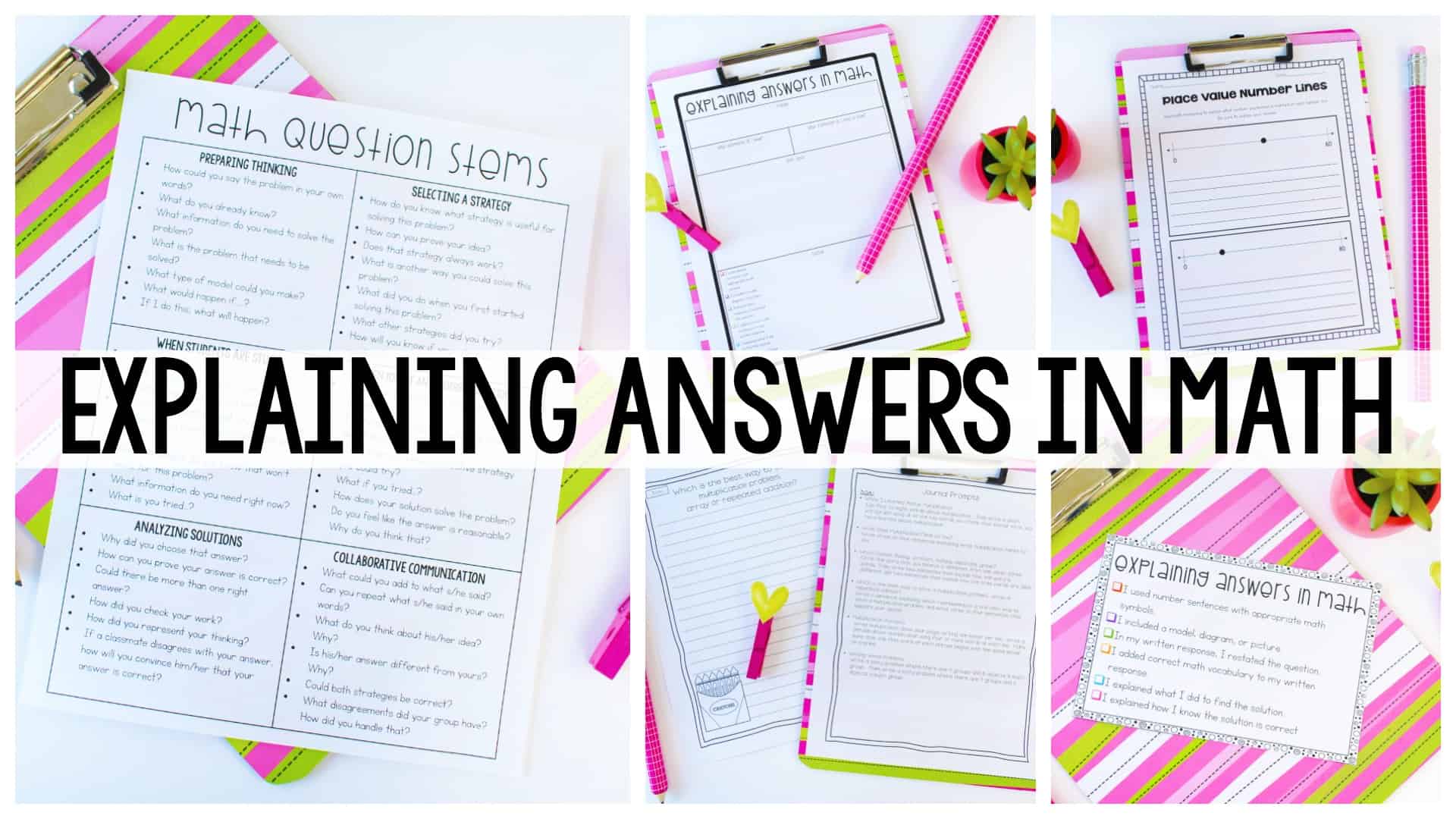
Teaching students how to explain their answers in math is not an easy task. At the beginning of the year a student’s typical math explanation looks something like this, “I added 120+230 and got 350.” Sometimes I even have students write, “I did it in my head.” I’ve even seen, “I just knew it” as an explanation. It takes time and consistent instruction to teach students HOW to explain their answers. In this post, I’ll share some of my favorite strategies for teaching students how to explain their thinking.
Explaining Answers in Math-Model
It seems so obvious, but it’s such an easy step for me to skip or to gloss over too quickly. At the beginning of the school year, I don’t expect students to be able to explain their math thinking. Instead, I model how to explain answers with students. For example, I teach the lesson below toward the beginning of the year. Rather than having students explain their thinking on their own, I model how to write an explanation.
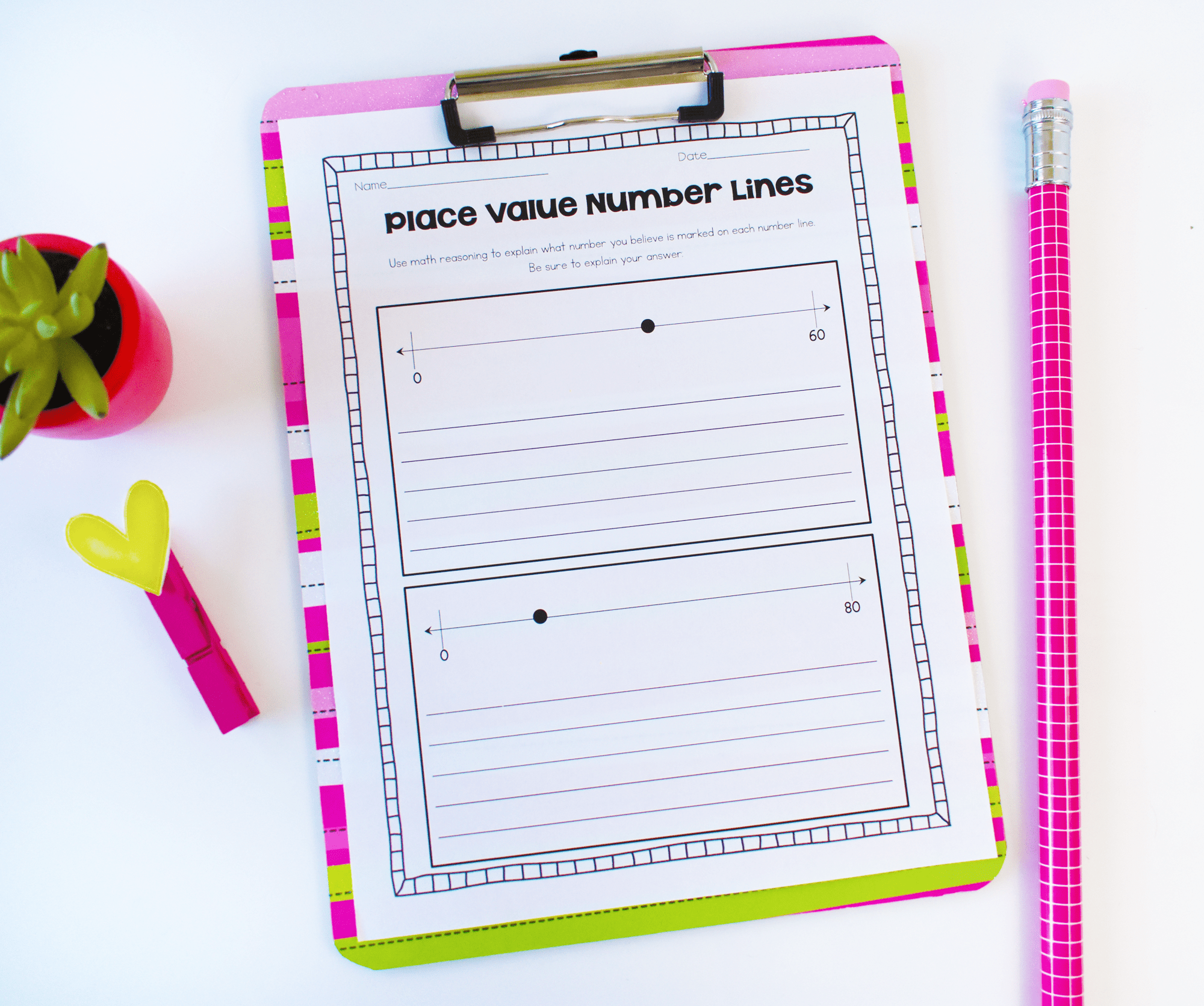
Explaining Answers in Math-Number Talks
Number talks are a great way to improve number sense, to get your students thinking about math in different ways, and, of course, to help them explain their answers. If you are not familiar with number talks, they follow this format:
- Teacher posts a problem or series of problems on chart paper.
- Students mentally solve the problem.
- Teacher calls on students for answers and records all given answers.
- Teacher calls on students to explain how they got their answers.
- Students share all strategies they used to get the correct answer, which the teacher records and rephrases as needed.
This instructional tool is powerful because the students are regularly explaining how they got their answers, and they are regularly hearing other students’ mathematical thinking and explanations.
Explaining Answers in Math-Sentence Stems
- I think __________ because _____________
- If ________ then _________
- The answer is ________ because _______
- Another example is _________
- I believe this is true because ______
- I solved the problem by ________
- I proved my thinking by ________
Explaining Answers in Math-Journals
Another way to scaffold and support students writing about math is to incorporate math journals into your math routine. Math journals do not have to be time consuming. I like to have my students could write in their math journals about five minutes a day, two or three times a week. I’m careful not to use math journals as additional word problem practice, because I try to incorporate journal prompts that require students to think conceptually and abstractly about the math concepts.
When designing journal prompts, avoid right or wrong questions. Students greatly benefit from questions that are opened ended, where they must give their opinion and support their opinion.
You can display prompts on your projector or write then on your dry erase board. Another idea is to create a notebook for students’ journal prompts. While this is a little more time consuming, it’s such a great resource for students. Plus, I love how it allows parents to actually SEE their child’s thinking grow over the course of the year. I made a set of journal prompts for third grade math that you can see here.
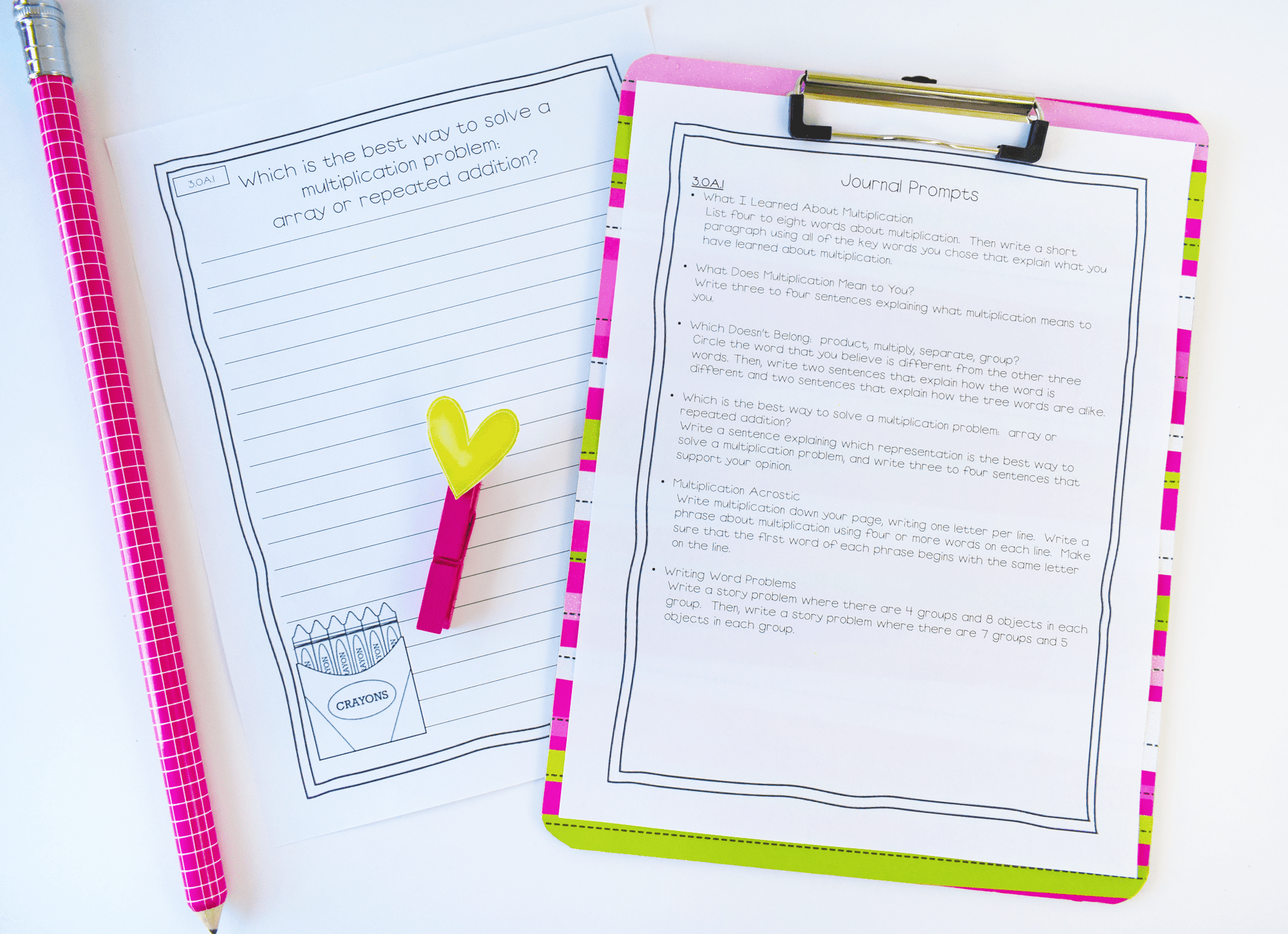
Explaining Answers in Math-Performance Tasks
If you’ve followed me on social media or my website for long, you know that I love performance tasks. One of the many reasons I’m so passionate about these tasks is that they lend themselves to communicating about math. Explaining answers in math should be embedded in your instruction, not a separate math unit, or a cram course for test prep.
In the lesson below, you can see how to incorporate explaining answers in math in a performance task. I love providing a color coding system that students can use as a checklist. For example, students will highlight or underline their number sentences in red. They circle their models with purple. If they restate the question, they underline that in green. Each part of the response is color coded. This helps students self-assess and hold students accountable.
It is important to note that not all tasks or questions lend themselves to teach type of response. Sometimes, students may only use a portion of the responses. You can download a copy of both forms here.
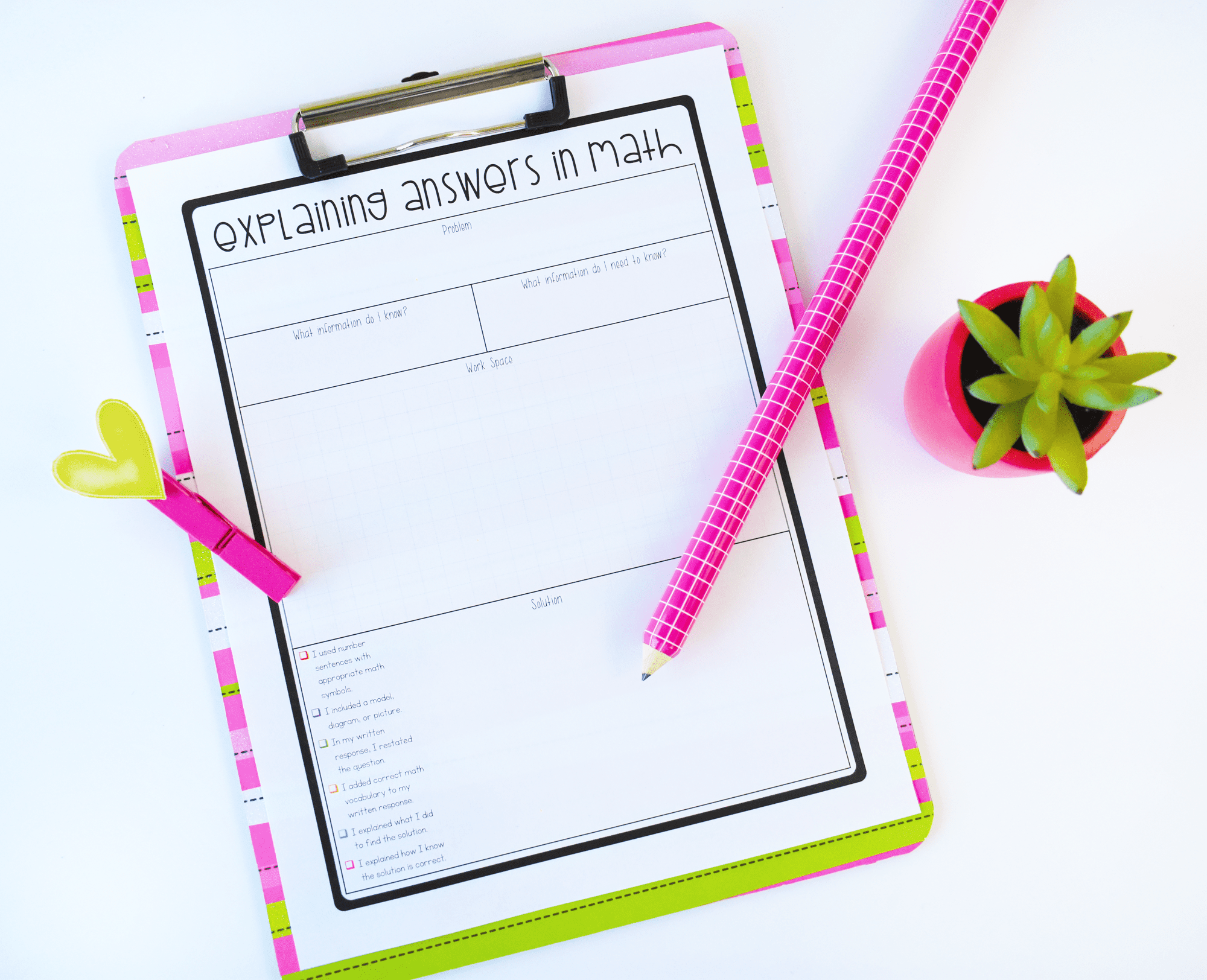
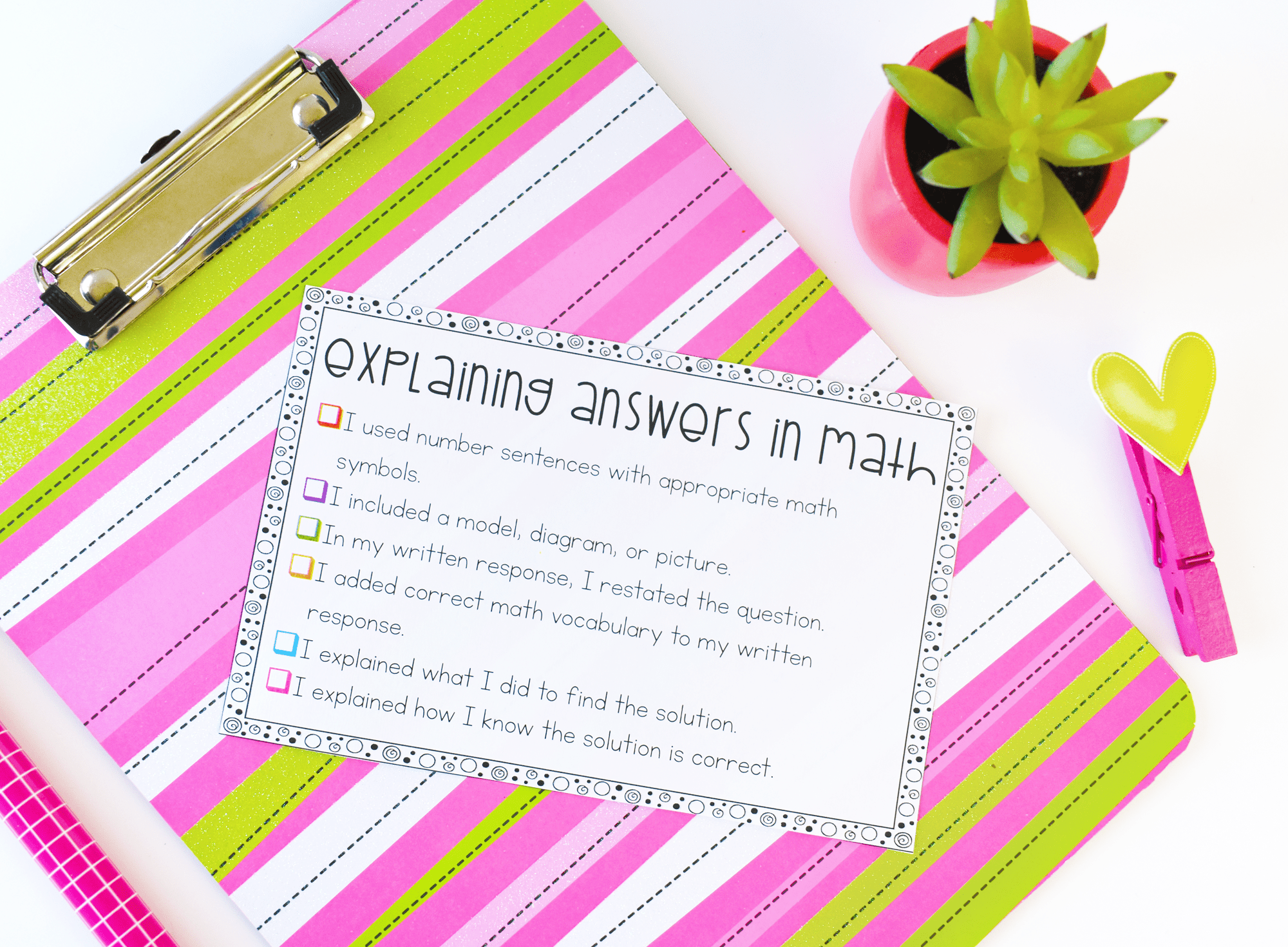
Explaining Answers in Math-Questioning
When students are struggle to explain their thinking, I have a tendency to help a little too much. It’s important to avoid asking yes or no questions and prompting statements that essential tell students what to do. Instead, ask open-ended questions that guide students. I’ve included a print out of some of my favorite questions to ask students during math workshop. I’ve found that this type of questioning is not always natural for me, so I like to have this reference. You can download your copy of these question stems here.
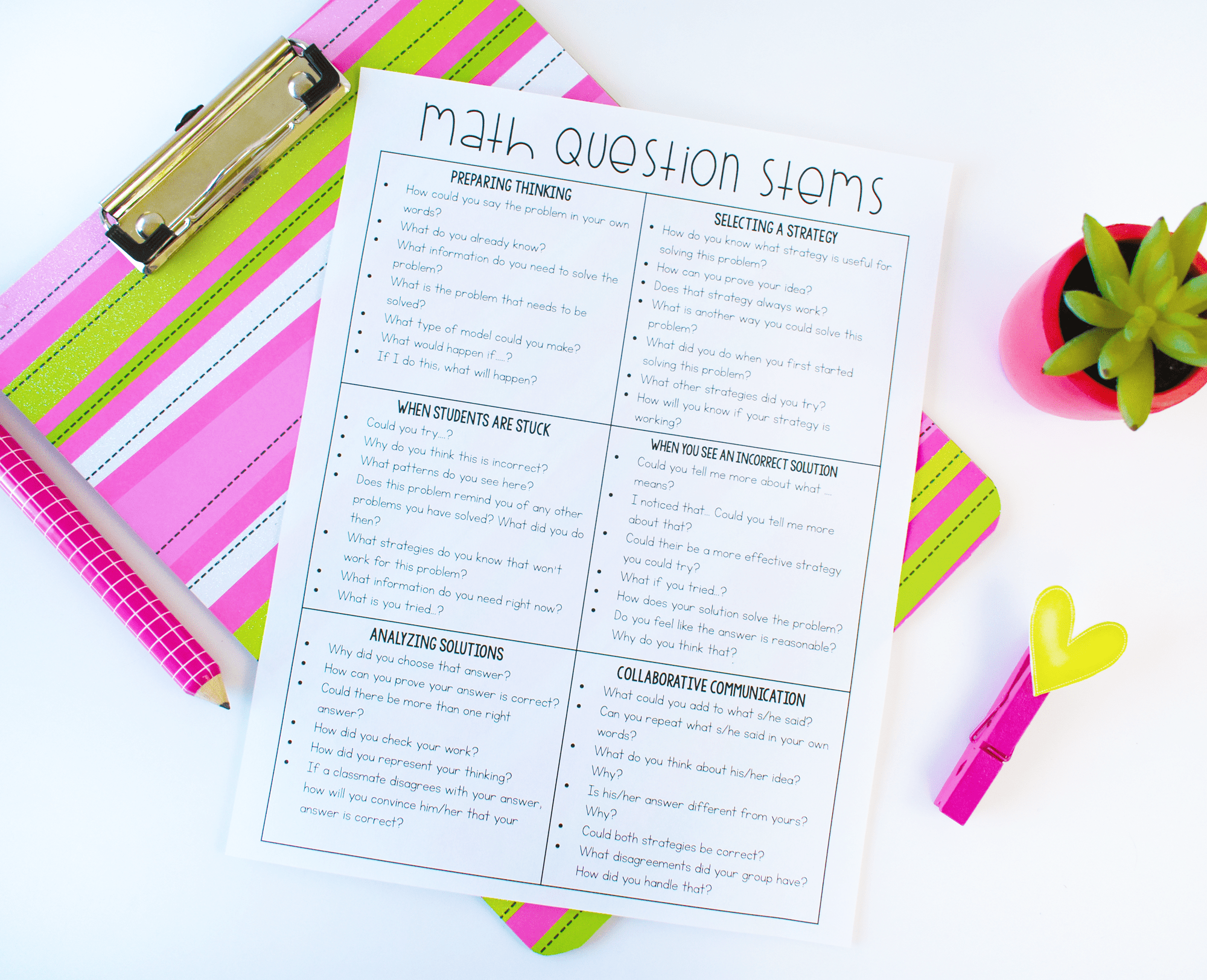
Special News
I also want to take this opportunity to share that I am hosting a LIVE and FREE webinar titled 3 Secrets to Teaching Your Math Standards Before Testing: Without Teaching an Inch Deep and a Mile Wide. This webinar will share my three favorite strategies and resources to help you avoid that feeling of cramming in everything just for the purpose of testing. You can click here to reserve your spot.




Math equations need a lot of time to solve them and Some time it is very hectic to do this task. So now Online Calculator’s available to sort out this issue and simplifying the large equations in just some seconds so People starting now using these.